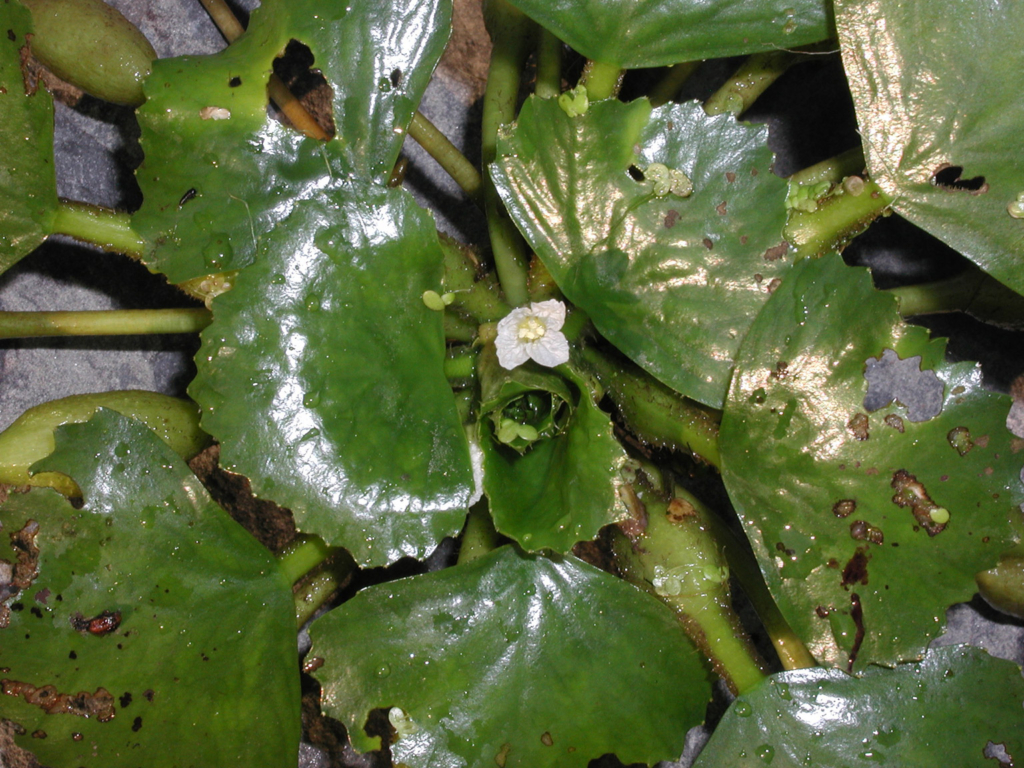European Waterchestnut
Trapa natans L
Plant Description
Annual plant that grows rooted to the river bottom with a floating rosette of rounded diamond-shaped toothed leaves. Feather like leaves along submerged stems. Distinctive nut-like seed with four curved horns, seed is green when fresh and brown when dried. Rosettes up to 30 cm in diameter, denes floating mats can grow up to 15 ft.
Plant Details
| Life Forms | |
|---|---|
| Habitats | |
| ODA Listing | |
| Soil and Moisture Conditions | |
| Suggested Actions | |
| Mature Height | leaves at water's surface |
| Distribution | Has not been found in Oregon. Established in Northeast US and parts of Canada. |
| Control | Complete removal by manual or mechanical techniques. |
| Reproduction and Spread | Reproduces by seed and vegetatively. Seeds viable for up to 10 years. Small branches can break off, float away, and produce new infestations. |
| Introduced | It was first introduced in the US in the 1850s-1870s as an ornamental plant. |
| Look Alikes | Not easily confsed with other species |
| Impact | Forms dense surface mats that crowd out native vegetation and reduce oxygen and light levels in the water below. Can limit recreational enjoyment of Aquatic environments and has very little value for waterfowl. |
| More Info |
© Marion Soil and Water Conservation District. All Rights Reserved.

